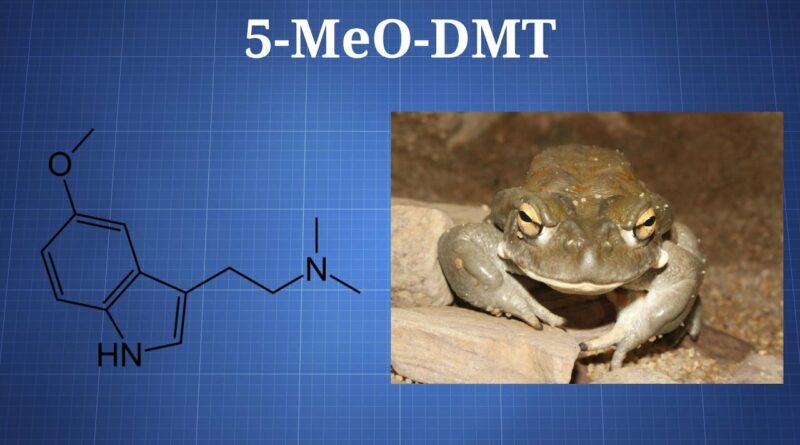Psychedelic Toad Venom: 5-MeO-DMT
[Please note that this page contains affiliate links. If you choose to purchase after clicking a link, I may receive a commission at no extra cost to you.]
A new psychedelic is rapidly gaining popularity throughout the consciousness of the western world. It is like psilocybin mushrooms, ayahuasca, and mescaline. These psychedelics may come from mushrooms, plants, and cactuses, but 5-MeO-DMT comes from the venom of a toad.
5-MeO-DMT is one of if not the most potent naturally occurring psychedelic. It is produced by a toad that is a rare species known as Bufo Alvarius, only found in the Sonoran Desert
5-MeO-DMT is in the same family as DMT (dimethyltryptamine), except it is about five times more potent.
Psychedelic Toad Venom: 5-MeO-DMT
The drug has been used for ages by licking the poisonous toad’s back to ingest the venom, but now the more popular version is the venom is scrapped off then dried as a smokable dust form.
The 5-MeO-DMT is obtained by milking the toad’s venom glands, and then it is dried into a brownish brittle, dry paste.
Shamans in Mexico and the southwestern United States have been gathering and smoking the psychedelic for centuries. However, its popularity is on the rise as many people worldwide are looking to explore it.
It only takes about five minutes after taking 5-MeO-DMT to feel the profound effects, which causes a tremendous spiritual trip that lasts, on average, for about an hour.
Those who have experienced the toad describe their experiences as being “reborn” and one with the universe.
Users experience moving environments filled with bright new colours in fractal patterns during their trip.
5-MeO-DMT Research
According to Alan K. Davis, professor at Johns Hopkins University, the Psychedelic Research Unit, 5-MeO-DMT leaves the person unresponsive and immobile it can produce vomiting, convulsions, euphoria, and intense emotional reactions.
The drug’s intensity makes it wrong to use as a party drug. It is by no means a recreational drug. If users ingest too much, they might ‘white out’ and disassociate from their body and mind, and nausea lasts for days.
Once 5-MeO-DMT wears off, people may experience an afterglow effect that leads them to make more positive life changes.
The psychedelic appears to have a placebo analgesic effect like that of hypnosis. In addition, 5-MeO-DMT has been shown to help people overcome negative behaviours, negative thought patterns, and past traumas.
The positive psychological effects have led some scientists to believe that in a controlled environment with a trained expert, the venom could help treat depression and anxiety.
Initial studies performed by John Hopkins University suggest that it may combat depression and anxiety just as effectively as psilocybin, in addition to requiring a much shorter duration of time to reap the therapeutic benefits.
John Hopkins 5-MeO-DMT
John Hopkins researcher Alan Davis piloted an online survey to look at the potential medicinal properties of 5-MeO-DMT. It included 362 volunteers that often used the toad venom in relaxed group settings.
The volunteers reported they were a part of gatherings of between five to 12 people, where the ceremonies were facilitated by a sober administer.
Volunteers would take turns being medicated. Then the experience was ended with a “closing circle” where they discussed their spiritual trips.
One hundred sixty-two volunteers self-reported they had either depression or anxiety, and about 80% of them showed considerable improvements after using 5-MeO-DMT.
Researchers believe that 5-MeO-DMT from toad venom positively treats anxiety and depression due to a complicated network of neurological changes in the persons’ brains and visions they received through their trips.
Scientists mustn’t recommend recreational use of toad venom as it should only be administered by medical supervision.


